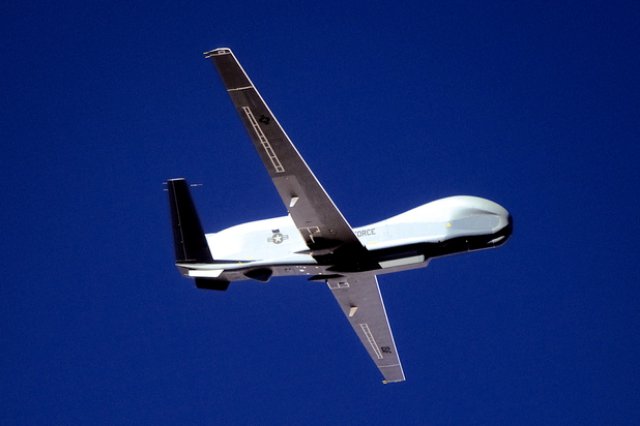 Northrop Grumman is focusing efforts to save the Global Hawk unmanned aircraft programme on reversing the U.S. Air Force’s intent to retire its young fleet of multi-sensor RQ-4B Block 30s in favour of keeping in service the aircraft they were intended to replace, the Lockheed U-2.
Northrop Grumman is focusing efforts to save the Global Hawk unmanned aircraft programme on reversing the U.S. Air Force’s intent to retire its young fleet of multi-sensor RQ-4B Block 30s in favour of keeping in service the aircraft they were intended to replace, the Lockheed U-2.
The company has made an unsolicited, fixed-price proposal to reduce the Block 30’s operating cost and improve the range and resolution of its electro-optical/infrared (EO/IR) imaging sensor in a bid to keep the aircraft in service beyond the end of fiscal 2014.
“We understand the debate is around the need to reduce the operating and support cost, and the need in particular [of] operational requirements for increased range and resolution,” says Tom Vice, President of Northrop Grumman Aerospace Systems.
In response, the company submitted a firm fixed-price proposal for 10 years of contractor logistics support (CLS) for the Air Force’s Global Hawks that would reduce its contribution to the Block 30 cost per flight hour (CPFH) by 40% from the fiscal 2011 level, he says.
Additional fixed-price offers have been made to meet the range/resolution requirement by integrating the U-2’s SYERS-2 multi-band sensor or wet-film Optical Bar Camera on the Block 30 at a cost markedly less than that estimated by the Air Force for upgrading the Global Hawk’s existing EO/IR sensor.
In a report requested by Congress, the Air Force says the CPFH for the Block 30 and U-2 were “roughly equal” in fiscal 2012, at $33,564 for the Global Hawk and $33,407 for the U-2.
But as transit time to the target area increases, the long-endurance Global Hawk becomes cheaper to operate than the U-2 because it requires fewer aircraft to maintain a high-altitude orbit, the report says. The Block 30 flies for 28 hr. versus 12 for the U-2.
“Cost is not the factor,” Air Force Chief of Staff General Mark Welsh told lawmakers earlier this month. Intelligence product quality is the real issue, he said, and combatant commanders “would prefer a U-2 product in many mission areas over the Global Hawk.”
Source: Aviation Week
